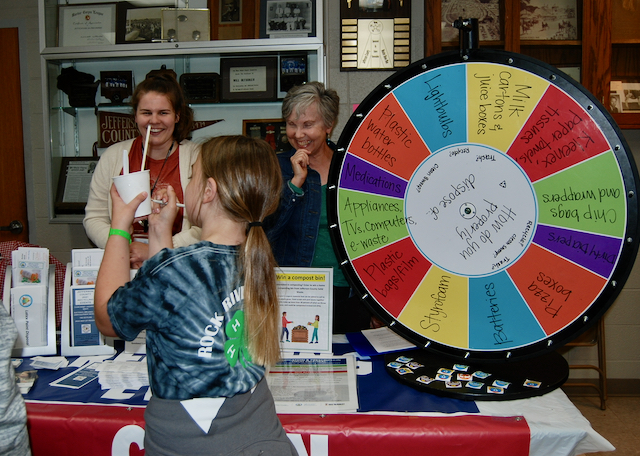Editor’s note: Following is the first edition within a new column called “Bird’s eye view.” The column will focus on environmental issues of local significance.
By Anita Martin
Jefferson County, Wisconsin made history on March 14, 2022. On that day, we experienced the largest avian influenza disease outbreak, to date, at a single facility in U.S. history.
Our county has the unfortunate distinction of being in the top four for deadly bird flu outbreaks in the United States during 2022-2023. The H5N1 disease outbreak at the Palmyra egg-laying facility puts us in the top four out of 312 U.S. infected commercial flocks, for the largest number of birds lost at one location—2,750,000, according to information developed by the USDA and presented on its website. Information presented by the USDA is here: https://www.aphis.usda.gov/aphis/ourfocus/animalhealth/animal-disease-information/avian/avian-influenza/hpai-2022/2022-hpai-commercial-backyard-flocks.
The current H5N1 endemic in birds is the worst avian disease outbreak in U.S. history, and possibly the most widespread animal disease ever. Nearly a year after the first commercial U.S. flock was infected last February, the avian influenza endemic, referred to by some as an avian pandemic, rages on. The most recent count of birds lost nationwide is 58,200,000, and sadly, within the last 33 days alone, 26 more U.S. poultry flocks having been infected.
Since 2021, more than 50 countries have been impacted by the uber-virulent, unpredictable H5N1 virus. Experts estimate more than 100,000,000 commercial and backyard birds have succumbed to the virus worldwide—not to mention countless wild birds of more than 50 species.
Here in Wisconsin, bird deaths of endangered species include roughly 1,200 Caspian terns in Door County late last spring, according to information published by the Milwaukee Journal Sentinel. The full Milwaukee Journal Sentinel story is here: https://www.jsonline.com/story/sports/outdoors/2022/07/01/avian-flu-has-taken-toll-dozens-wild-bird-species-42-states/7783024001/.
According to media accounts, Wildlife experts believe the eagle population has suffered significantly as well, based on such information as nesting numbers and reports of incidental deaths arising from depopulation methods. A Milwaukee Journal Sentinel story is here: https://www.jsonline.com/story/sports/outdoors/2022/11/19/avian-flu-is-suspected-as-the-primary-cause/69655955007 and a story published by Fox News on its website is here: https://www.foxnews.com/us/13-bald-eagles-poisoned-eating-carcasses-euthanized-animals-minnesota-landfill-3-died.
According to the USDA, data shows bald eagles have been infected in all four migratory flyways, in 24 states, including Wisconsin. The USDA release is here: https://www.aphis.usda.gov/aphis/ourfocus/animalhealth/animal-disease-information/avian/avian-influenza/hpai-2022/2022-hpai-wild-birds.
Concern has been expressed over the impact the Palmyra outbreak may have had on the nearby, wildlife-rich southern unit of the Kettle Moraine State Forest and the Princes Point Wildlife Area.
More than a dozen non-bird species have been infected with H5N1 in the U.S. over the past year, many of which are thought to have eaten asymptomatic disease-carrying waterfowl, like ducks, or diseased carrion. The USDA cites that information here: https://www.aphis.usda.gov/aphis/ourfocus/animalhealth/animal-disease-information/avian/avian-influenza/hpai-2022/2022-hpai-mammals.
Over the last year, the bird flu endemic has also caused zoos and petting zoos to temporarily close to visitors. Likewise, a number of aviaries, including the aviary at the Milwaukee Zoo, and wildlife sanctuaries in the U.S. and elsewhere have had to suspend visitors at times.
Additionally, poultry exhibits were prohibited at a number of state fairs and county fairs over the past year due to H5N1 outbreaks, impacting youth 4H activities.
If you share my concerns about avian influenza, here’s your chance to weigh in.
The Animal and Plant Health Inspection Service (APHIS), in cooperation with the USDA, is requesting public input in preparing an environmental impact statement for Highly Pathogenic Avian Influenza (HPAI). The public comment period runs through Feb. 17.
Public comments are requested on potential impacts to:
• Soil, air, and water quality.
• Humans, including effects on health and safety, agricultural lands, industries and the economy, public perception, cultural and historic resources, equity and environmental justice, children’s health, and tribes.
• Wildlife, including eagles, and plant populations.
• Potential impacts of climate change on HPAI outbreak activities.
For full details, and to submit comments before the deadline, use the following link: https://www.federalregister.gov/documents/2023/01/18/2023-00884/notice-of-intent-to-prepare-an-environmental-impact-statement-for-highly-pathogenic-avian-influenza.
What are your concerns? What do you feel needs to be changed?
Now is the time to share your thoughts and ideas with APHIS.
Anita Martin is a longtime freelance journalist whose work has appeared in such publications as the Waterloo/Marshall Courier, The Madison Times, Agri-View, Dane County Lifestyles (formerly 50 Plus Lifestyles newsmagazine), Verona Press and Wisconsin Woman magazine, covering such topics as health and wellness, and women’s and multicultural issues. More recently, she has developed interest in such topics as environmental issues, avian influenza and other zoonotic diseases, and public health.

Anita Martin, at right, volunteers in 2021 at the Jefferson County Clean Sweep booth at the Jefferson County Fair. File photo/Kim McDarison.
This post has already been read 1077 times!